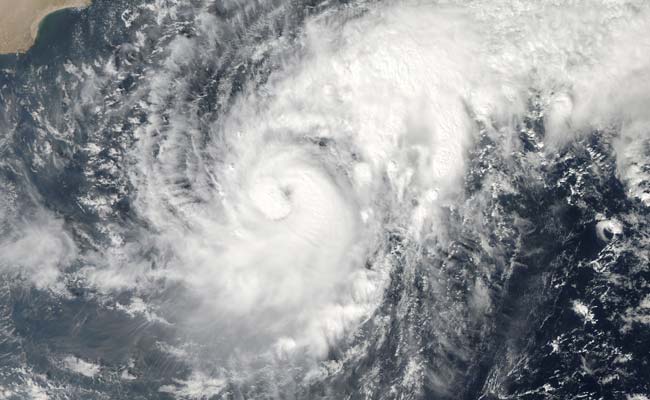
Cyclone Nilofar, building in the Arabian Sea, will hit Gujarat and Pakistan's southern coastal areas before noon on Saturday, a day later than originally expected
Here are the latest updates
India has six categories of tropical storms based on wind speeds and damage expected, with Nilofar falling into category five, the second from top.
On Friday, the coastal areas Saurashtra and Kutch will see heavy rains and gales and the sea will turn extremely rough, warned the Met Department, which says all fishermen must return to the coast urgently.
The storm, currently packing winds of up to 155 kilometres per hour, will weaken before it hits land, with the wind speed expected to slow down to about 100 kilometres per hour.
Met department officials say that means that before landfall, Nilofar is likely to be downgraded from its current status of "very severe" cyclonic storm.
In Gujarat, officials are working on evacuating villages in the coastal areas of Kutch district that is expected to bear the brunt of the storm. "We are preparing for the worst to happen, let us also pray that cyclone Nilofar gets subdued and doesn't bring serious damage," said Chief Minister Anandiben who has been reviewing preparations.
The Centre is monitoring the situation closely, said Cabinet Secretary Ajit Seth, who reviewed the preparedness of the state government today.
The Centre has also directed agencies like the National Disaster Relief Force and the National Disaster Management Authority, as well as officials from the departments of health, telecom and water resources to be ready for any eventuality. The Indian Air Force has also been alerted.
Nilofar is the second cyclone to hit India this month; Hudhud slammed into the Andhra Pradesh coast on October 12 and killed nearly 20 people in the state.
Nilofar is expected to pass Goa within the next one day; the state has seen unseasonal showers for the last three days.
India, particularly its east coast, and neighbouring Bangladesh are routinely hit by bad storms between April and November that cause deaths and widespread damage to property.

